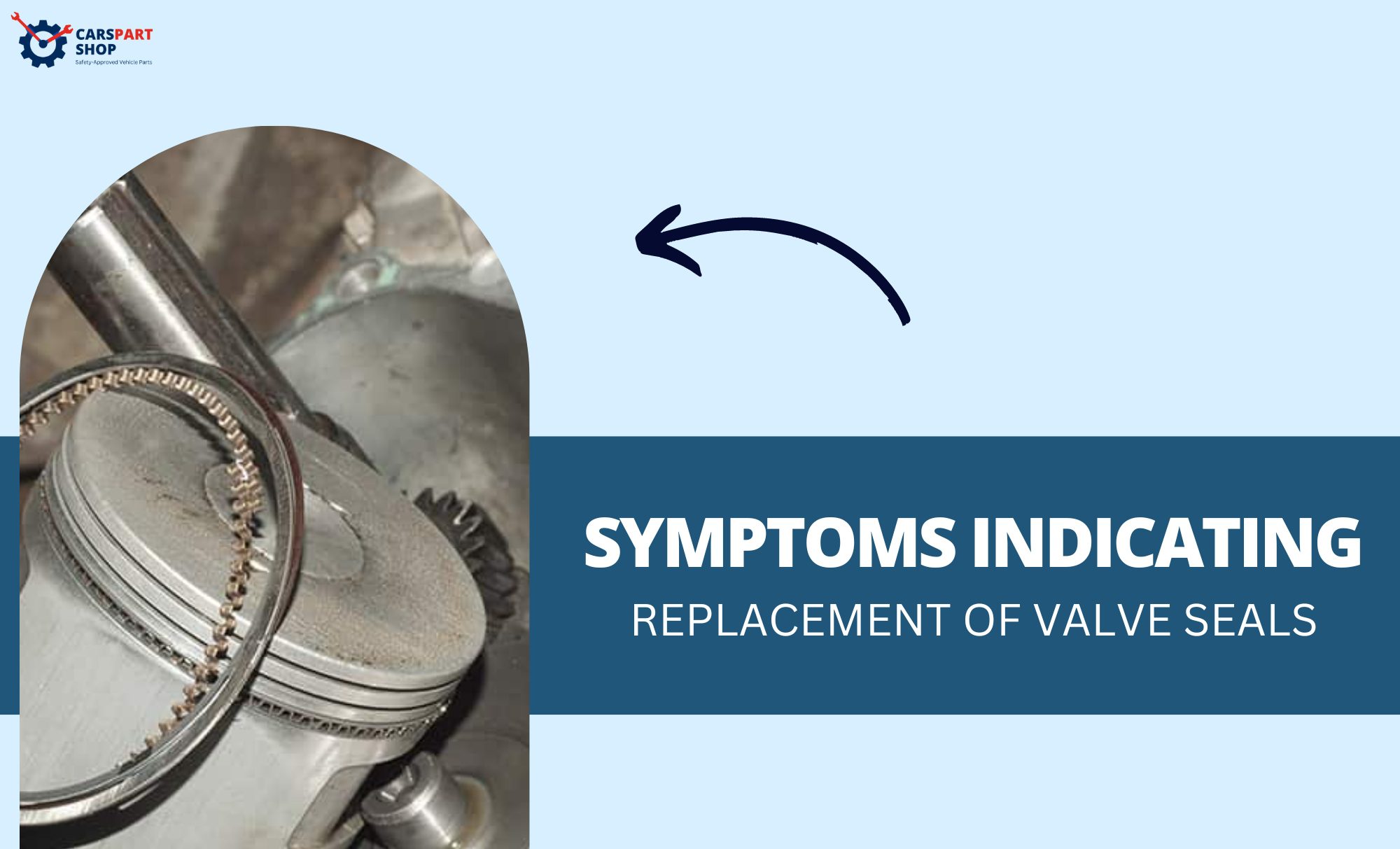No auto parts last forever. There comes a time when every part wears out. It holds true for valve seals also. The valve seals are an essential component of your vehicle as they keep the pressure and engine oil on different sides of the car engine. The engine in a vehicle faces an extreme level of wear. Therefore, it can lead to damage to valve seals also. Hence, it is best to change it quickly before it affects the valve seal catastrophically. There are numerous red flags that indicate the deterioration of the seals ultimately increasing the valve seals replacement cost.
Valve Seals Replacement Cost
Your car’s kind will influence the precise cost of replacing your valve seal. In almost all cases, you can fix your car yourself for less money than you would pay a mechanic. Unfortunately, the replacement of a valve seal takes a long time to complete and demands a great deal of knowledge and expertise.
Taking to a Mechanic
Any task requiring the dismantling of your engine block should be handled by a mechanic.
In most cases, valve seals are not very expensive. They fall in the $45–110 range. It is offered by a number of stores and providers of automobile parts. However, the valve will be the most affordable component. But. valve seal replacement cost increases due to labor costs.
The absolute lowest hourly rate for mechanics is $50, while the highest rate is $200 or more. So, when you combine the cost of the parts as well as the estimated four hours of labor the total amount you spend could be anywhere from a few hundred dollars to several thousand.
You can replace your valve seals and timing belt together with the dismantled engine blocks, as recommended by many mechanics. Your engine won’t need to be disassembled any time soon if you replace it with your valve seals, which normally cost less than $50.
Do it Yourself
If you want to save on the mechanic expenses, you can try to replace the valve seals on your own.
Replacing valve seals requires disabling the engine block. Therefore, to accomplish this, you will need the proper equipment and all of the hand tools needed for disassembly. Depending on your buy, the price of only the tools could reach $300. Moreover, depending on the grade and type of oil you use, a replacement will cost you $30 to $50. The number of hours you need to replace the valve seals depends on the type of car.
DIY valve seal replacement will reduce your bill extensively.
What are Valve Seals?
The valve stem seals are also known as valve guides or valve seals. They help in keeping motor oil out of the combustion chamber. It also helps in maintaining the valve in the proper alignment and lubrication.
The combustion chamber is sealed by the valve stems, which are the long, skinny parts of the valve with a little flat head at the end. The valve stem seals keep the valve aligned and guide it into the valve seat of the cylinder head while also preventing engine oil from entering the combustion chamber. Oil circulates through the engine immediately above the valve to keep the camshaft lubricated.
The camshaft has high and low portions known as lobes and heels. When the camshaft rotates, the lobes push the valves open, and the heels force the valve to close, regulating the airflow in and out of the combustion chamber. A timing chain or belt is used to synchronize the piston timing with the timing of the valve opening and shutting.
How Valve Seals Are Different from Piston Rings?
A fuel mixture’s amount entering into the cylinder is controlled via valves. The valve itself has a seal and it aids in stopping the flow of combustion fumes and oil into the main engine compartment.
These seals are typically made of a very durable rubber substance and are attached to a tiny collar at the top of the valve stem. You’ll start to experience some significant symptoms specific to this issue once these valve seals start to wear out.
On the other hand, the piston ring prevents combustion gases from escaping the chamber. Moreover, it regulates oil flow to the piston. Engine performance can be significantly lowered by leaks. Also, by transferring the extra heat from the piston head to the cylinder, a piston ring lowers the possibility of heat damage.
Symptoms Indicating Replacement of Valve Seals

There are a number of symptoms that you could experience if your valve guide seals are damaged. It’s crucial to comprehend the signs so you can respond appropriately when you encounter them. Here are a few of the most typical indications of bad valve guide seals.
Exhaust Emitting Blue Smoke
Blue smoke coming from the exhaust pipe is the most common sign of a faulty valve seal.
As the valve guides and seals degrade, oil can enter the combustion chamber and burn alongside the gasoline in a car. Car owners could also see that their oil levels are deteriorating with time.
Clogging of Spark Plugs
The burnt oil after combustion will cause an accumulation of clay-like substance over the spark plugs. The oil comes from leaking valve seals or defective turbochargers. It will lead to the clogging of sparkplugs. Thus, there will be problems in starting the car. The valve seals replacement cost will be more because you will need sparking plug also for repair.
Noise from the Engine
Another major symptom indicating a problem with your valve seals is a peculiar sound coming from your engine block. If you have valve issues, listen for popping or ticking noises. Every time you speed, the noise tends to become louder. It shows that some valve train components are out of alignment or worn out. The most probable reason is that the car engine is not receiving enough lubrication.
Rough Idling
The automobile engine is frequently prone to maintaining a constant low, idle RPM. As a result, when a valve seal fails and oil enters the combustion chamber, you may experience rough idling or occasionally stalling. The faulty intake valve seals also block spark plugs causing rough idling. You may check whether the valve seal is damaged while your automobile is idling. When due to an improper valve seal, oil enters the combustion chamber, and may occasionally exhibit rough idling or stalling.
Cold Engine Test
While the engine is cold, it is simpler to spot a faulty valve seal. After being exposed to the cold for some time, a defective valve guide seal will also develop a small gap. This implies that when an engine is started when it is cold, a little amount of oil is drawn into the combustion chamber through the seal gap. Therefore, when you start the automobile for the first time, a plume of blue-white smoke will emerge from the exhaust.
Poor Acceleration
A worn-out valve seal might be the cause of your engine’s power loss. The vast majority of manufacturers design their valves to exactly match their seats. Oil builds up on top of the valve during a leak, which makes it lose its ideal fit. Therefore, it causes compression issues that affect performance.
As the oil burns up and deposits ash on the spark plugs and within the combustion chamber, worn valve seals may be the cause of misfires and slow acceleration.
Frequently Asked Questions
Valve seals are an essential component. They are installed around the valve stem. Basically, valve stem seals stop oil from the cylinder head from entering the combustion chamber. Each cylinder requires a valve seal. A faulty seal can result in engine failure by filling the engine with oil.
The new valve seal can range from $50 to $110. However, the price can be more depending on the material and availability. It is also dependent on the brand and model.
Yes, you can drive with faulty valve seals. However, it will affect the engine if you continue to drive. It will cause an increase in rod wear, higher oil consumption, and decreased engine power. Yet, worn seals can continue to function for a very long period before needing expensive and labor-consuming repair.
You may hear a ticking sound if the valve seals are wearing out. Other signs could be loss of power, poor acceleration, misfiring, rough idling, and an increase in fuel consumption.







